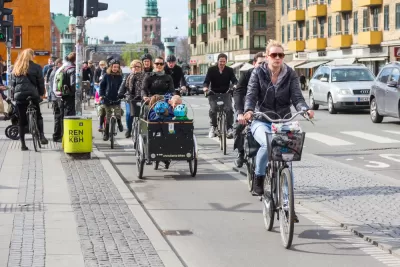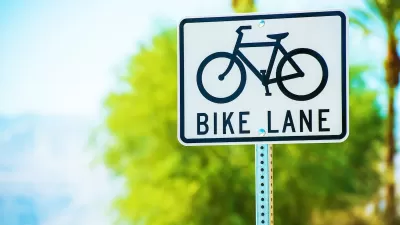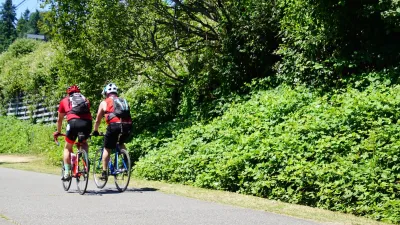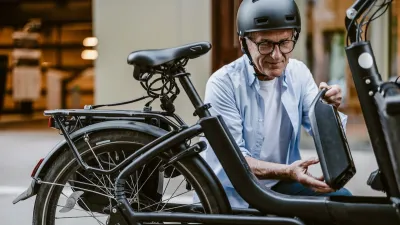Key to explaining the popularity of biking in Copenhagen is its cultural attitude, which is also based on sound cost-benefit analysis. Until Americans change how they value transport modes, protected bike lanes may be elusive.

"In a new paper, Stefan Gössling from Lund University and Andy Choi from the University of Queensland take a look at Copenhagen's approach and argue that it explains how the city has built out so much dedicated cycling infrastructure, including miles of uninterrupted and separated bike lanes, and even dedicated bike tunnels, bridges, and traffic lights," writes Ben Schiller for Fast Company.
The study, "Transport transitions in Copenhagen: Comparing the cost of cars and bicycles," published in the May 2015 issue of Ecological Economics, is focused primarily on costs of two modes of transport: bicycling and driving. "It is the first time a price has been put on car use as compared to cycling," states Science News.
From report's abstract:
In many cities of the world, bicycle infrastructure projects are implemented to foster more sustainable transportation systems. However, such projects have often raised questions regarding their public funding, as they entail considerable costs. This paper reviews cost–benefit analysis (CBA) frameworks as these are presently used to assess bicycle infrastructure projects.
"When the city decides on a cycling project, it compares the cost to that of a road for cars, and it includes not only the upfront amount, but also things like the cost of road accidents to society, the impact of car pollution on health, and the cost of carbon emitted to the atmosphere," writes Shiller.
After including these factors, it comes to a rather startling calculation. One kilometer driven by car costs society about 17 cents (15 euro cents), whereas society gains 18 cents (16 euro cents) for each kilometer cycled, the paper finds. That's because of factors like the health benefits of cycling and the avoided ill-effects of cars.
Finally, protected bike lanes play a key role, asserts one of the report's author.
"If we want people to cycle, then we have to change our approach towards urban infrastructure. Cyclists will only cycle [in large numbers] when they feel physically safe and when it's fast, which means they need to be physically separated from cars," Stefan Gössling says.
Hat tip to Len Conly, Sierra Club Transportation Committee
FULL STORY: How Copenhagen Became A Cycling Paradise By Considering The Full Cost Of Cars

Alabama: Trump Terminates Settlements for Black Communities Harmed By Raw Sewage
Trump deemed the landmark civil rights agreement “illegal DEI and environmental justice policy.”

Planetizen Federal Action Tracker
A weekly monitor of how Trump’s orders and actions are impacting planners and planning in America.

The 120 Year Old Tiny Home Villages That Sheltered San Francisco’s Earthquake Refugees
More than a century ago, San Francisco mobilized to house thousands of residents displaced by the 1906 earthquake. Could their strategy offer a model for the present?

In Both Crashes and Crime, Public Transportation is Far Safer than Driving
Contrary to popular assumptions, public transportation has far lower crash and crime rates than automobile travel. For safer communities, improve and encourage transit travel.

Report: Zoning Reforms Should Complement Nashville’s Ambitious Transit Plan
Without reform, restrictive zoning codes will limit the impact of the city’s planned transit expansion and could exclude some of the residents who depend on transit the most.

Judge Orders Release of Frozen IRA, IIJA Funding
The decision is a victory for environmental groups who charged that freezing funds for critical infrastructure and disaster response programs caused “real and irreparable harm” to communities.
Urban Design for Planners 1: Software Tools
This six-course series explores essential urban design concepts using open source software and equips planners with the tools they need to participate fully in the urban design process.
Planning for Universal Design
Learn the tools for implementing Universal Design in planning regulations.
Clanton & Associates, Inc.
Jessamine County Fiscal Court
Institute for Housing and Urban Development Studies (IHS)
City of Grandview
Harvard GSD Executive Education
Toledo-Lucas County Plan Commissions
Salt Lake City
NYU Wagner Graduate School of Public Service





























